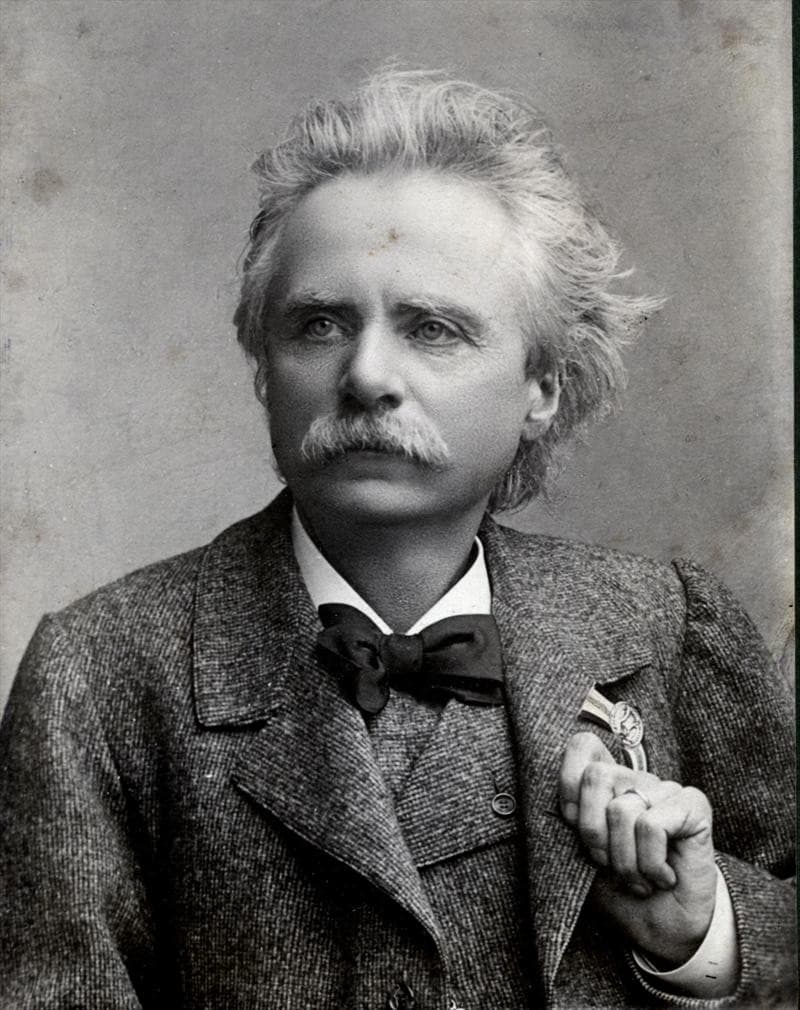Edvard Grieg (1843–1907) viewed his three violin sonatas as representative of his development as a composer. The first (1865) was the young naïve composer, the second (1867) was his nationalistic phase, and the third (1887) represented a wider outlook. This is what he wrote in a letter in 1900, and we can also see their importance in that he tried to get them performed whenever he could, often with himself as the pianist.

Edvard Grieg
The first sonata, composed in the summer of 1865, shows an idiomatic understanding of string writing, even though Grieg, as a pianist, had no experience in that direction. However, he had spent the summer of 1864, with the violinist Ole Bull and played through music with him. Bull, along with exposing him to music-making by a top violinist, also communicated his own enthusiasm for Norwegian folk music, and both elements would prove influential on the young composer. We must remember that in the mid-19th century, Norway was still under a strong Danish influence: Grieg himself grew up speaking Danish and operating within the traditions and culture of Denmark. Ideas of Norwegian nationalism were as yet unknown to him and it was through strong nationalists such as Ole Bull that Grieg’s ideas began to widen.
While some elements in the Violin Sonata, Op. 8 show Norwegian influences, such as the trio in the second movement recalling the Hardanger fiddle that he had heard Bull play. The Hardanger fiddle has nine strings, only four of which are bowed. The other five are sympathetic strings that resonate when the bowed strings are played. Note on this instrument the extra strings under the finger board, the bridge with the pass-through for the understrings, and the extra pegs at the top of the instrument.

Hardanger fiddle made by Knut Gunnarsson Helland
Despite this evocation of a Norwegian folk instrument, the sonata is largely viewed as more Danish than Norwegian. Grieg still hasn’t found his native voice. It isn’t until the second violin sonata that Grieg’s Norwegian ideas come to fruition, to the point that the Norwegian composer Niels Gade asked him to make his next sonata less Norwegian, to which Grieg replied, ‘On the contrary…the next one will be even more so’.
In the opening Allegro con brio, despite the key being nominally in F major, we start with a rather melancholic feeling. The first theme sets up a dialogue, albeit a bit stiff, between the violin and the piano, while the second theme, more lyrical, returns us to the melancholic idea of the opening chords.
Edvard Grieg: Violin Sonata No. 1 in F Major, Op. 8 – I. Allegro Con Brio

Mischa Elman
The recording was made in April 1955 at the Decca Studios in West Hampstead, London, with Mischa Elman, violin, and Joseph Seiger, piano. The Russian-born American violinist Mischa Elman (1891–1967), as a child, was viewed as a performer with a tremendous future. The violinist Pablo de Sarasate was an early supporter, and Leopold Auer made it possible for him to enter the St Petersburg Conservatory at age 11. After touring Germany, the UK, and the US from 1904 onward, he moved to the US in 1914 and was joined there by his family, and became a citizen in 1923. His first recordings were made in 1906 and his final LPs in 1967. After 1950, his usual accompanist was the pianist Joseph Seiger, as we hear on this recording.

Performed by
Mischa Elman
Joseph Seiger
Recorded in 1955
Official Website
For more of the best in classical music, sign up for our E-Newsletter
